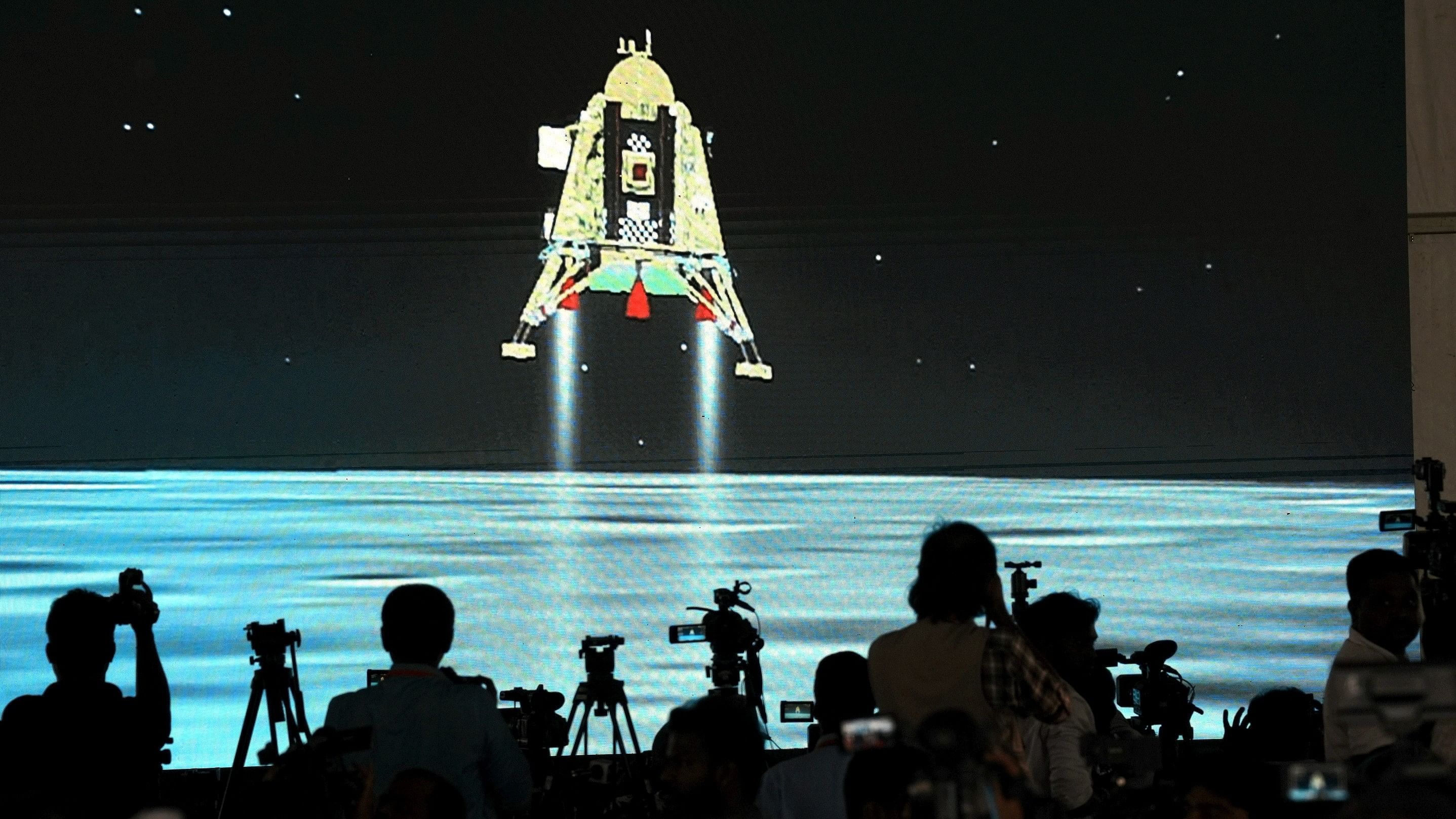
ISRO employees watch the successful soft landing of Chandrayaan-3 on the surface of the moon.
Credit: PTI File Photo.
The rover of Chandrayaan-3, Pragyan, rolled out on the Moon on Thursday, setting the stage for the on-board payloads to conduct scientific experiments through the next 14 days on the lunar surface.
“Chandrayaan-3 ROVER: Made in India Made for the MOON! The Ch-3 Rover ramped down from the Lander and India took a walk on the moon!” ISRO said on Thursday morning.
What will Vikram lander, Pragyan rover do on the Moon?
Both the lander and the rover have a mission life of one lunar day or 14 earth days.
The 26-kg rover – launched inside the 1,752-kg landing module – will now move around the lunar surface to conduct scientific experiments with its two payloads.
The Laser Induced Breakdown Spectroscope (LIBS) will analyse the lunar surface and derive its chemical and mineralogical composition while the Alpha Particle X-Ray Spectrometer (APXS) is designed to determine the elemental composition (magnesium, aluminium, silicon, potassium, calcium, titanium, and iron) of the lunar soil and rocks around the 4 km x 2.4 km landing site.
The four payloads on Vikram will measure parameters including the surface plasma density, thermal properties, and seismicity around the landing site. Spectro-polarimetry of HAbitable Planet Earth (SHAPE), launched on the propulsion module, is aimed at probing into a variety of exoplanets for potential habitability.
What after 14 days?
After 14 days, night will fall on the Moon, when temperatures may reach a destructive -208 degrees Fahrenheit. Under such conditions, Vikram and Pragyan will become inactive since they have been designed to work only in the Sun, according to reports. They are expected to finish the experiments while the Sun is still out.
When the night ends...
The chances of Vikram and Pragyan coming back to life are rare, but ISRO scientists are hopeful they will revive.
Will Chandrayaan-3 come back to Earth?
The lander and rover will remain on the Moon even after the completion of the mission.